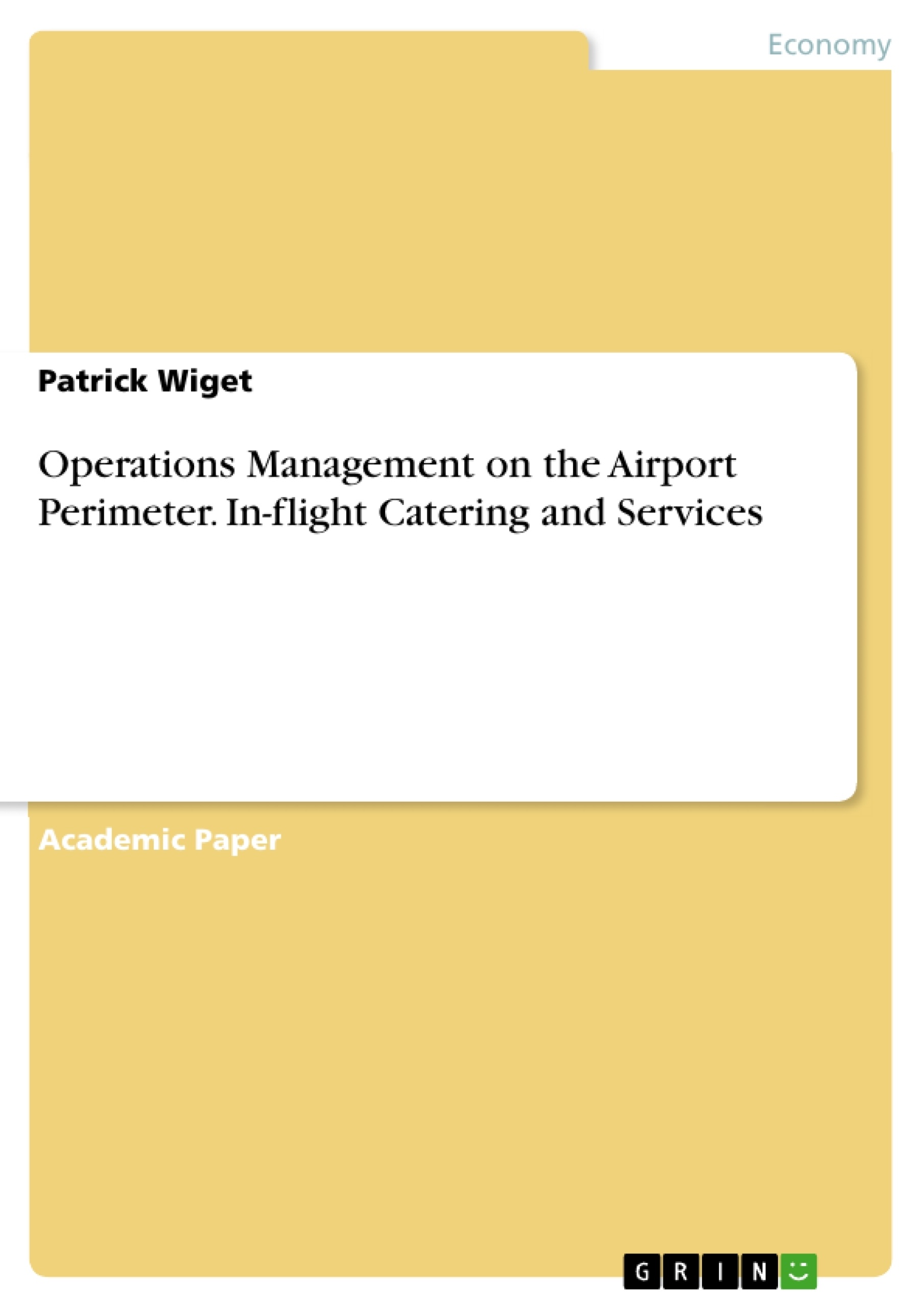This paper refers to a catering supplier called creative catering Ltd. (CC), based in Basel, Switzerland. In 2015, they opened a new branch called "In-flight Services and Catering" (ISC), providing services to the in-flight industry. ISC serves on a high-class level to private, corporate, governmental and royal customers from an international setting with multicultural backgrounds who do not have a local airline service for their needs. ISC cannot be compared to the more basic services provided on first-class charter flights (CF), because it provides to a smaller audience focusing much more on individual needs than a CF.
ISC is delivering up to four flights a day, to small business jets and wide-body long-haul aircraft. In 2018 the ISC generated a revenue of CHF 280,000 which is about a fourth of the CC total income. The combination of services and goods provided by ISC in relation with the difficult forecasting situation will be discussed thoroughly throughout the paper. This difficult relationship shows how important a clearly defined operations management and process setup is.
Catering is the largest part of the branch, therefore, this paper mainly considers the in-flight catering sector with its process of the ordering system, discussing the vulnerability and challenges within the system and analysing a lean approach to improve its performance and evaluate new findings.
Inhaltsverzeichnis (Table of Contents)
- Introduction
- Operations Management on the airport perimeter
- Facility layout
- Process selection
- Demand to the supply chain
- Forecasting supply and demand
- Inventory
- Vulnerability in the operations system
- Unknown demand
- The ordering process
- Key findings
- Conclusion
- References
Zielsetzung und Themenschwerpunkte (Objectives and Key Themes)
This paper examines the operations management of Inflight Services and Catering (ISC), a subsidiary of creative catering Ltd. (CC) based in Basel, Switzerland. It investigates the complexities of providing high-class inflight services to a niche clientele with specific needs and analyzes the challenges faced by ISC in managing its operations on the airport perimeter. The paper focuses on the key role of operations management in ensuring efficient service delivery, particularly in the context of catering services, and explores the vulnerability and challenges associated with the ordering system. Additionally, it considers a lean approach to enhance the performance of ISC's operations and evaluate the resulting findings.
- Operations management in the inflight catering industry
- Challenges of serving a niche clientele with specific needs
- Vulnerability and challenges within the ordering system
- Lean approach to improve operational performance
- Analysis of key findings and potential solutions
Zusammenfassung der Kapitel (Chapter Summaries)
- Introduction: This chapter provides an overview of ISC, its services, and the challenges it faces in managing its operations within the inflight catering sector. The chapter highlights the unique characteristics of ISC's clientele and the complexities of providing services to this niche market. It also discusses the importance of operations management in ensuring efficient service delivery and the need for a well-defined operational framework.
- Operations Management on the airport perimeter: This chapter focuses on ISC's operations on the airport perimeter, which presents unique challenges due to its security domain and complex interorganizational nature. It discusses the key stakeholders involved in the service delivery process, their respective needs and goals, and the importance of a comprehensive understanding of the aviation industry. The chapter also emphasizes the need for risk identification and management in order to design secure and efficient processes and facility layouts.
- Vulnerability in the operations system: This chapter delves into the vulnerabilities within ISC's operations system, focusing on the challenges of unknown demand and the complexity of the ordering process. It explores the potential risks and consequences of these vulnerabilities and highlights the importance of developing effective strategies to mitigate these risks.
Schlüsselwörter (Keywords)
Key terms and concepts explored in this work include operations management, inflight catering, airport perimeter, security domain, stakeholder engagement, risk identification, service delivery, ordering system, vulnerability, lean approach, process optimization, and performance evaluation. The paper aims to understand the specific challenges and opportunities faced by ISC in managing its operations within the unique context of the inflight catering industry.
- Citation du texte
- Patrick Wiget (Auteur), 2019, Operations Management on the Airport Perimeter. In-flight Catering and Services, Munich, GRIN Verlag, https://www.grin.com/document/976497



